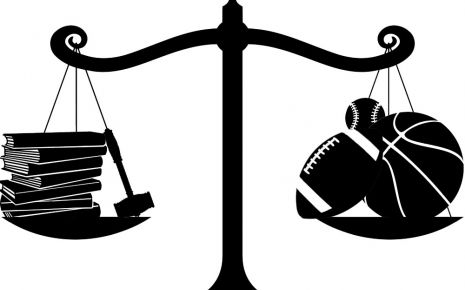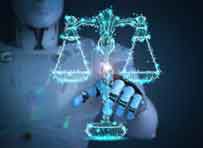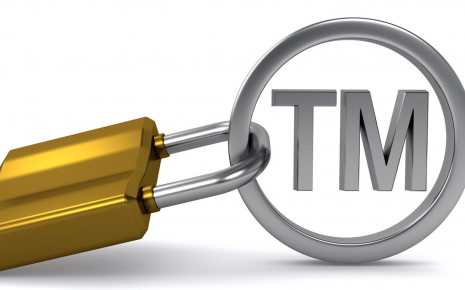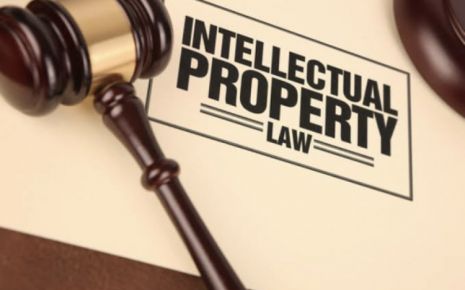Preserving Creativity: The Importance of Copyright Protection for Meme Creators
The meme culture industry flourishes in the grey areas of intellectual
property, where creativity and innovation thrive despite the lack of protection
offered by IP regulations or legislations.
The definition of "artistic works" in section 2 (c) of the Copyright Act, 1957 includes paintings, sculptures, drawings (including diagrams, maps, charts, or plans), engravings, photographs, works of architecture, and artistic handicrafts. The majority of photos and photographs used in memes are copyrighted; therefore, their unauthorised distribution constitutes an infringement.
How should courts apply copyright law to "internet memes" is a pending legal topic for the courts and attorneys to specifically work on.
There are two copyright issues associated with memes:
In instances of copyright infringement, the "fair use" legal idea comes to the rescue. Section 54(1) of the Indian Copyright Act, 1957, which says "fair dealing with any work," defines fair use doctrine. It is an acceptable defence in situations where copyright infringement would otherwise occur. Social media memes are considered derivative works, and only the copyright holder has the legal right to create them. However, the owner's copyrights are not absolute and irrevocable.
The question of whether an internet meme is copyrightable is understandable given that they can be viewed as plain entertainment. Many types of jokes have not been protected by copyright, forcing comedians to establish self-policing industry standards. Internet memes are nonetheless subject to the same copyright regulations as any other potentially copyrightable works, though. According to the Copyright Act of 1976, "original works of authorship fixed in any physical medium of expression, now known or hereafter created, from which they can be viewed, reproduced, or otherwise conveyed, shall be entitled to copyright protection."
Thus, focus and originality are two factors that are necessary. Memes are considered unique since they were individually generated and meet the "very low" standard for creativity required for copyright protection. Memes are fixed as internet images.
The Supreme Court ruled in Bleistein v. Donaldson Lithographing Co. that a realistic etching used as a circus advertisement was not ineligible for copyright protection. The Court put more emphasis on the personality of the work even though it was an etching that was meant to be a realistic representation of circus acts, concluding that all creative works have "unique" and "irreducible" expressions from their creators.
This inventiveness is shown in memes by the backdrop image chosen (i.e., what copyrighted material would best capture the creator's expressive vision), the placement of the text (i.e., above the picture, within the picture like a dialogue, etc.), and the message contained in the text (i.e. the phrases the will constitute the joke or commentary). Creative choices were made while selecting the precise SpongeBob episode scene, the expression of the humour, and what and how to name the image in our example meme, which was developed infra in Section III(a). No matter how "crude, humble, or obvious" they initially seem, each creator's unique set of choices ultimately leads to distinct creative choices that satisfy the requirement of "some creative spark.
Meme producers already have legal protection from copyright whenever they modify their original works; they don't need to know or intend that their works are protected. A creator does not need to intend to produce a work protected by copyright. In Alfred Bell v. Catalda, a mezzotint artist replicated works that were in the public domain, but the end product had minor differences as a result of an artist error. According to the Second Circuit, these minor differences resulted in the establishment of a new copyright interest.
Despite the fact that the author had no intention of producing a copyrighted work. Courts and lawyers should not be the parties responsible for determining artistic merit and what is "creative" outside of the most obvious cases. Internet memes may not be considered works of art deserving of copyright protection, but many contemporary art forms, such as Richard Prince's appropriation style or Andy Warhol and Jeff Koon's pop-art style, were once (and are still) viewed with the same suspicion. The court's role is limited to determining which kinds of works satisfy the statutory requirements; it does not decide what is "worthy" of copyright protection. Internet memes ought to be covered by copyright protections in circumstances of independent invention since they are fixed and meet the criteria for "very low" inventiveness.
Fair use "is not designed to protect lazy appropriators. Its goal instead is to facilitate a class of uses that would not be possible if users always had to negotiate with copyright proprietors. The "ultimate test" of fair use is whether the progress of human thought "would be better served by allowing the use than preventing it." In analyzing the fair use defense, courts balance the four factors outlined in the 1976 Copyright Act:
Courts should not weigh "the four statutory factors…in isolation, one from another. All are to be explored, and the results weighed together, in light of the purposes of copyright." There are no "bright-line rules," but instead the statute "calls for case-by-case analysis."
United Kingdom has implemented the EU Copyright Directive, which provides exceptions to caricature, parody and pastiche.8 Similar to the Indian and USA laws, even UK protects the memes under the doctrine of fair use/dealing, provided the meme is not used for commercial purposes. Section 30A of the Copyright, Designs and Patents Act, 19889 in UK protects caricature, parody and pastiche under fair dealing.
Further, several countries including India have come up with intermediary guidelines to be followed by social media websites such as Facebook and Instagram, whereby they are instructed to maintain a strong surveillance on any uploaded content to ensure the protection of rights such as the right to privacy and protection against defamation.
In India "The Information Technology (Intermediary Guidelines and Digital Media Ethics Code) Rules, 2021" were recently enacted by the Ministry of Electronics and Information Technology, which mandate that intermediaries such as Facebook, Instagram etc., to block the access of any unlawful information within 36 hours upon an order from the court, the government.
Elsewhere, European Union has come up with the EU Directives for Copyright, Article 17 of which prescribes that, information service providers that store and provide information to public at large have to ensure the rights of the right-holders in protecting their content on such platforms.
The definition of "artistic works" in section 2 (c) of the Copyright Act, 1957 includes paintings, sculptures, drawings (including diagrams, maps, charts, or plans), engravings, photographs, works of architecture, and artistic handicrafts. The majority of photos and photographs used in memes are copyrighted; therefore, their unauthorised distribution constitutes an infringement.
How should courts apply copyright law to "internet memes" is a pending legal topic for the courts and attorneys to specifically work on.
There are two copyright issues associated with memes:
- Copyright on the meme itself, and
- Copyright on the picture, character, or name of the person, as well as the design.
In instances of copyright infringement, the "fair use" legal idea comes to the rescue. Section 54(1) of the Indian Copyright Act, 1957, which says "fair dealing with any work," defines fair use doctrine. It is an acceptable defence in situations where copyright infringement would otherwise occur. Social media memes are considered derivative works, and only the copyright holder has the legal right to create them. However, the owner's copyrights are not absolute and irrevocable.
Validity of Copyright Protection for Internet Memes
Copyright protection for internet means is really important because copyright grants the owner of the copyright various exclusive rights, including the ability "to reproduce," "to make derivative works," "to distribute copies," and "to show," making copyright protection for online memes is crucial. These are essential rights for a creator to hold in check and safeguard their original works.The question of whether an internet meme is copyrightable is understandable given that they can be viewed as plain entertainment. Many types of jokes have not been protected by copyright, forcing comedians to establish self-policing industry standards. Internet memes are nonetheless subject to the same copyright regulations as any other potentially copyrightable works, though. According to the Copyright Act of 1976, "original works of authorship fixed in any physical medium of expression, now known or hereafter created, from which they can be viewed, reproduced, or otherwise conveyed, shall be entitled to copyright protection."
Thus, focus and originality are two factors that are necessary. Memes are considered unique since they were individually generated and meet the "very low" standard for creativity required for copyright protection. Memes are fixed as internet images.
- Fixation
A work is "fixed" in a tangible medium of expression when its embodiment in a copy or phone record, by or under the author's authority, is sufficiently permanent or stable to permit it to be perceived, reproduced, or otherwise communicated for a period of more than transitory duration, according to the Copyright Act. In accordance with the 1976 Act, a copy is defined as "material objects in which a
work is fixed by any means presently known or later discovered, and from which the work may be perceived, reproduced, or otherwise conveyed, either directly or with the assistance of a machine or device."
The question of whether internet memes are "fixed" can be answered simply but interestingly. Online images are "fixed" in the sense of the law, according to the courts. A meme will be properly "fixed" in a tangible medium by storing the image on an online server for any significant amount of time that is more than "transitory." Although it seems like a logical response to the fixation question, this sets online memes apart from other joke-telling techniques that lack copyright protection, such as standup comedy, where a comedian's delivery of a joke might vary from performance to performance.
- Originality
Original, as the term is used in copyright, merely means that the work was independently developed by the author (as opposed to taken from other works), and that it possesses at least a minimal amount of ingenuity.
The originality examination is split into two sections by this holding:
- was the work independently developed; and
- does the work exhibit a bare minimum of innovation.
If the work was independently generated, the first question is more of a case-by-case issue for litigation. A work only has to be "independently developed" if the author does not "copy from another work" when creating it.
Copyright originality does not call for novelty, in contrast to patent registration. If a certain meme creator "independently produced" their meme, that will establish if they have a copyright interest in their meme or if they are violating the meme of another creator. For instance, if two poems write identical poems without being aware of one another's efforts, neither poem is unique yet both are original and copyrightable.
The Supreme Court ruled in Bleistein v. Donaldson Lithographing Co. that a realistic etching used as a circus advertisement was not ineligible for copyright protection. The Court put more emphasis on the personality of the work even though it was an etching that was meant to be a realistic representation of circus acts, concluding that all creative works have "unique" and "irreducible" expressions from their creators.
This inventiveness is shown in memes by the backdrop image chosen (i.e., what copyrighted material would best capture the creator's expressive vision), the placement of the text (i.e., above the picture, within the picture like a dialogue, etc.), and the message contained in the text (i.e. the phrases the will constitute the joke or commentary). Creative choices were made while selecting the precise SpongeBob episode scene, the expression of the humour, and what and how to name the image in our example meme, which was developed infra in Section III(a). No matter how "crude, humble, or obvious" they initially seem, each creator's unique set of choices ultimately leads to distinct creative choices that satisfy the requirement of "some creative spark.
Meme producers already have legal protection from copyright whenever they modify their original works; they don't need to know or intend that their works are protected. A creator does not need to intend to produce a work protected by copyright. In Alfred Bell v. Catalda, a mezzotint artist replicated works that were in the public domain, but the end product had minor differences as a result of an artist error. According to the Second Circuit, these minor differences resulted in the establishment of a new copyright interest.
Despite the fact that the author had no intention of producing a copyrighted work. Courts and lawyers should not be the parties responsible for determining artistic merit and what is "creative" outside of the most obvious cases. Internet memes may not be considered works of art deserving of copyright protection, but many contemporary art forms, such as Richard Prince's appropriation style or Andy Warhol and Jeff Koon's pop-art style, were once (and are still) viewed with the same suspicion. The court's role is limited to determining which kinds of works satisfy the statutory requirements; it does not decide what is "worthy" of copyright protection. Internet memes ought to be covered by copyright protections in circumstances of independent invention since they are fixed and meet the criteria for "very low" inventiveness.
Internet Memes and Fair Use
Although existing prior to 1976, the fair use affirmative defense was finally codified in the 1976 Copyright Act. The fair use defense exists to advance copyright's purpose of "promoting the Progress of Science and useful Arts." The defense accomplishes this by allowing "others to build freely upon the ideas and information conveyed by a work."Fair use "is not designed to protect lazy appropriators. Its goal instead is to facilitate a class of uses that would not be possible if users always had to negotiate with copyright proprietors. The "ultimate test" of fair use is whether the progress of human thought "would be better served by allowing the use than preventing it." In analyzing the fair use defense, courts balance the four factors outlined in the 1976 Copyright Act:
- The purpose and character of the use, including whether such use is of a commercial nature or is for nonprofit educational purposes;
- The nature of the copyrighted work;
- The amount and substantiality of the portion used in relation to the copyrighted work as a whole; and
- The effect of the use upon the potential market for or value of the copyrighted work.
Courts should not weigh "the four statutory factors…in isolation, one from another. All are to be explored, and the results weighed together, in light of the purposes of copyright." There are no "bright-line rules," but instead the statute "calls for case-by-case analysis."
Copyright Law Will Help Protect and Promote New Meme Creators
The last policy concern that must be considered is how copyright protection will affect the creation of new memes. Here, there are three aspects of copyright law that will protect and promote. new meme creators:- Independent Creation:
As long as they "independently produce" their new meme, the creator of a meme will not be held accountable for infringing on another meme's intellectual property rights. It is possible for two different meme creators to produce the same meme and have their own individual copyright interests in their work. Nevertheless, neither meme creator would be infringing on the copyright of the other if they independently created their own meme and were unaware of the existence of the other creator's meme.
Additionally, because memes are considered to be either "compilations" or "derivative" works, the copyright protection "extends only to the material contributed by the author of such work, as distinguished from the pre-existing material employed in the work, and does not imply any exclusive right in the pre-existing material." Because of this criterion, the only part of the meme that the person who created it may claim as their own in terms of copyright protection is the part that contains the jokes, commentary, or other graphic changes they made.
They do not have an exclusive right to generate memes using the copyrighted image that they selected, which means that other meme artists are free to use the same copyrighted image in their own memes as well.
- The Idea/Expression Dichotomy:
The distinction between ideas and expressions offers new makers of memes still another layer of protection. The phrase "to any idea, procedure, process...concept or principle" does not fall under the protection of an author's copyright in a work.
Because of this criterion, many different types of jokes have been unable to benefit from copyright protection. "copyright's merger theory would limit the author's ability to gain protection" in situations where there are only a few limited ways to communicate the same concept or joke.
Because to this provision of the law governing copyright, it would be impossible for the creator of a meme to acquire a copyright interest (and monopoly) in the concept of cracking a joke about a recent development in popular culture or making use of an especially humorous image to turn into a meme. Instead, the person who initially created the meme would only have a copyright interest in their particular statement.
In actuality, the application of this rule would restrict a meme creator's copyright interests to the narrower scope of preventing exact copies of their memes from being used commercially by third parties. However, the primary concern of meme producers with regard to copyright protection is precise copying and exploitation, and the limited scope of this protection not only suits what meme creators wish to protect but also encourages the production of new memes by other authors.
- The Fair Use Doctrine
The "fair use" defence can be used by new authors of memes if they "transform" an existing meme into one with a different meaning or develop a new meme based on an existing meme. The existence of "meta memes," sometimes known as "memes about memes," is made possible by this idea. This subcategory of meme creation is one that is afforded the same degree of protection against unfair usage as the original internet memes.
It is generally accepted that the use of a meme for commercial purposes does not fall within the purview of the fair use doctrine. As a result, the owner of the copyrighted work that was used to create the meme may pursue legal action against the person who created the meme. It is important to note, however, that if a company creates its own meme without copying any original artistic work, then the distribution of the same meme by third parties, even if done for commercial purposes, does not call upon any copyright infringement.
This is an important point to keep in mind. Many companies are looking into the possibility of using memes as a form of advertising. In point of fact, many businesses have incorporated meme marketing into an extremely vital component of their overall marketing campaign.
As an illustration, Zomato has utilised a photograph of the well-known Pakistani comedian Moin Aktar in his role as Harmonium Chacha for the purposes of advertising and marketing. In this particular instance, the owners of the copyrighted work in the picture of the Harmonium Chacha are the producers of the film, and Zomato has used the exact same image to promote its own business.
Meme-Ology Litigation In India Vis-Vis Other Countries
Till date, India has not witnessed any meme-ology litigation. In the United States of America, the jurisprudence pertaining to parody such as memes etc. is almost the same as that of India. Even USA recognizes the parodies within the 'fair use' exception, if the meme satisfies the four statutory factors as laid above in the present article.United Kingdom has implemented the EU Copyright Directive, which provides exceptions to caricature, parody and pastiche.8 Similar to the Indian and USA laws, even UK protects the memes under the doctrine of fair use/dealing, provided the meme is not used for commercial purposes. Section 30A of the Copyright, Designs and Patents Act, 19889 in UK protects caricature, parody and pastiche under fair dealing.
Further, several countries including India have come up with intermediary guidelines to be followed by social media websites such as Facebook and Instagram, whereby they are instructed to maintain a strong surveillance on any uploaded content to ensure the protection of rights such as the right to privacy and protection against defamation.
In India "The Information Technology (Intermediary Guidelines and Digital Media Ethics Code) Rules, 2021" were recently enacted by the Ministry of Electronics and Information Technology, which mandate that intermediaries such as Facebook, Instagram etc., to block the access of any unlawful information within 36 hours upon an order from the court, the government.
Elsewhere, European Union has come up with the EU Directives for Copyright, Article 17 of which prescribes that, information service providers that store and provide information to public at large have to ensure the rights of the right-holders in protecting their content on such platforms.
Law Article in India
Legal Question & Answers
Lawyers in India - Search By City
LawArticles
How To File For Mutual Divorce In Delhi

How To File For Mutual Divorce In Delhi Mutual Consent Divorce is the Simplest Way to Obtain a D...
Increased Age For Girls Marriage

It is hoped that the Prohibition of Child Marriage (Amendment) Bill, 2021, which intends to inc...
Facade of Social Media

One may very easily get absorbed in the lives of others as one scrolls through a Facebook news ...
Section 482 CrPc - Quashing Of FIR: Guid...

The Inherent power under Section 482 in The Code Of Criminal Procedure, 1973 (37th Chapter of t...
The Uniform Civil Code (UCC) in India: A...

The Uniform Civil Code (UCC) is a concept that proposes the unification of personal laws across...
Role Of Artificial Intelligence In Legal...

Artificial intelligence (AI) is revolutionizing various sectors of the economy, and the legal i...








Please Drop Your Comments